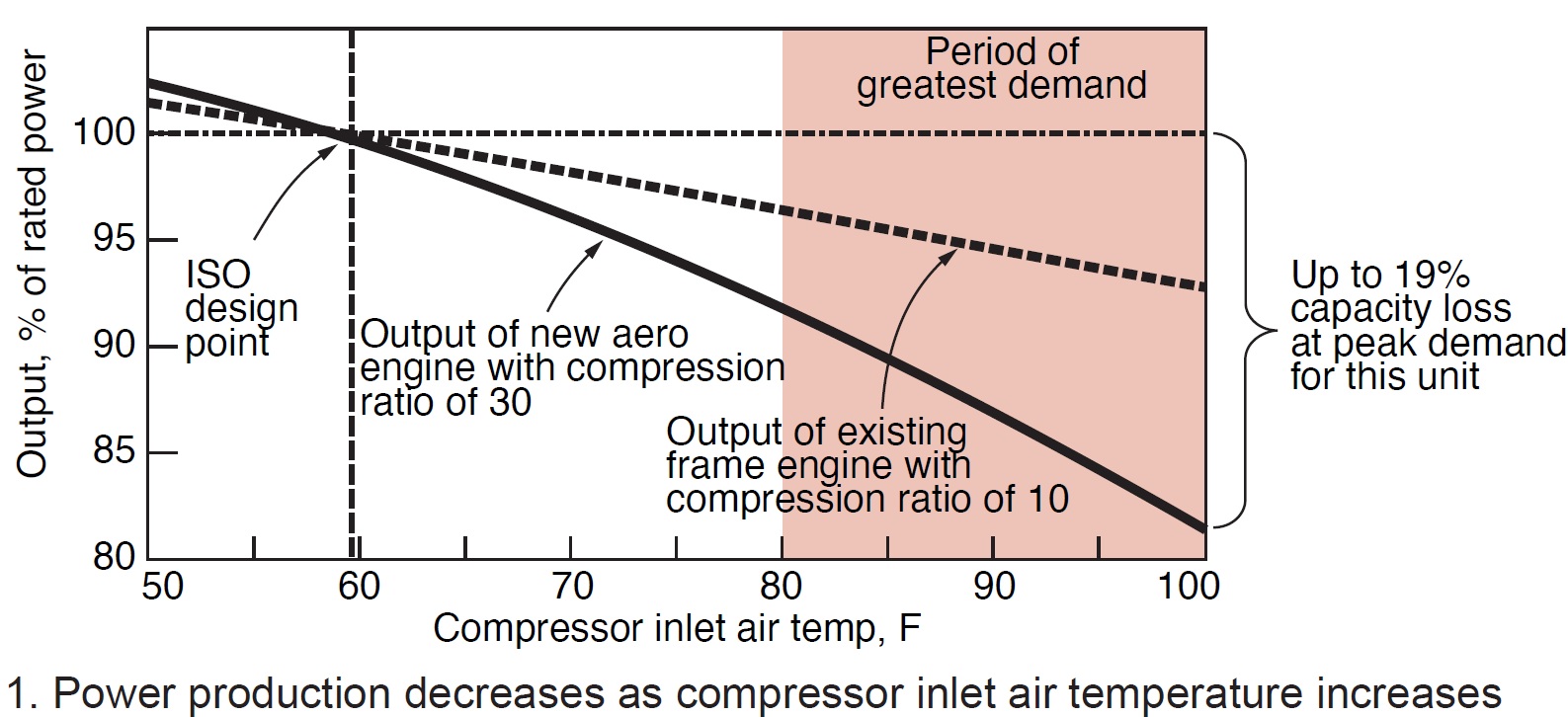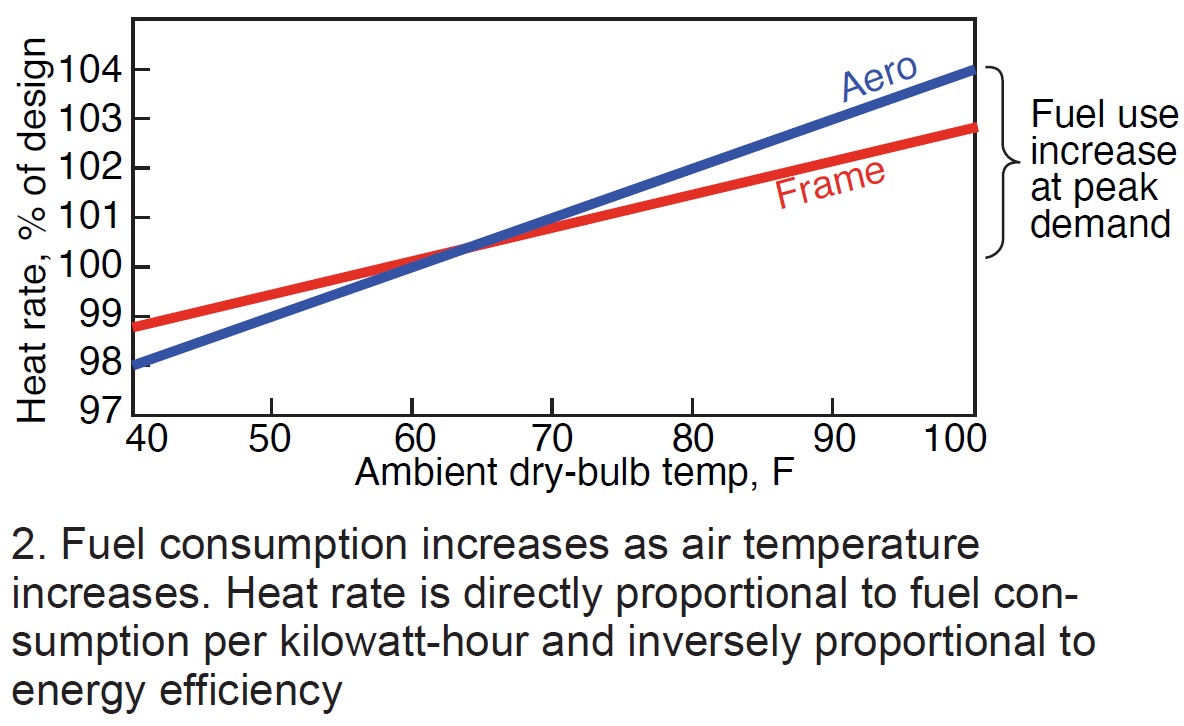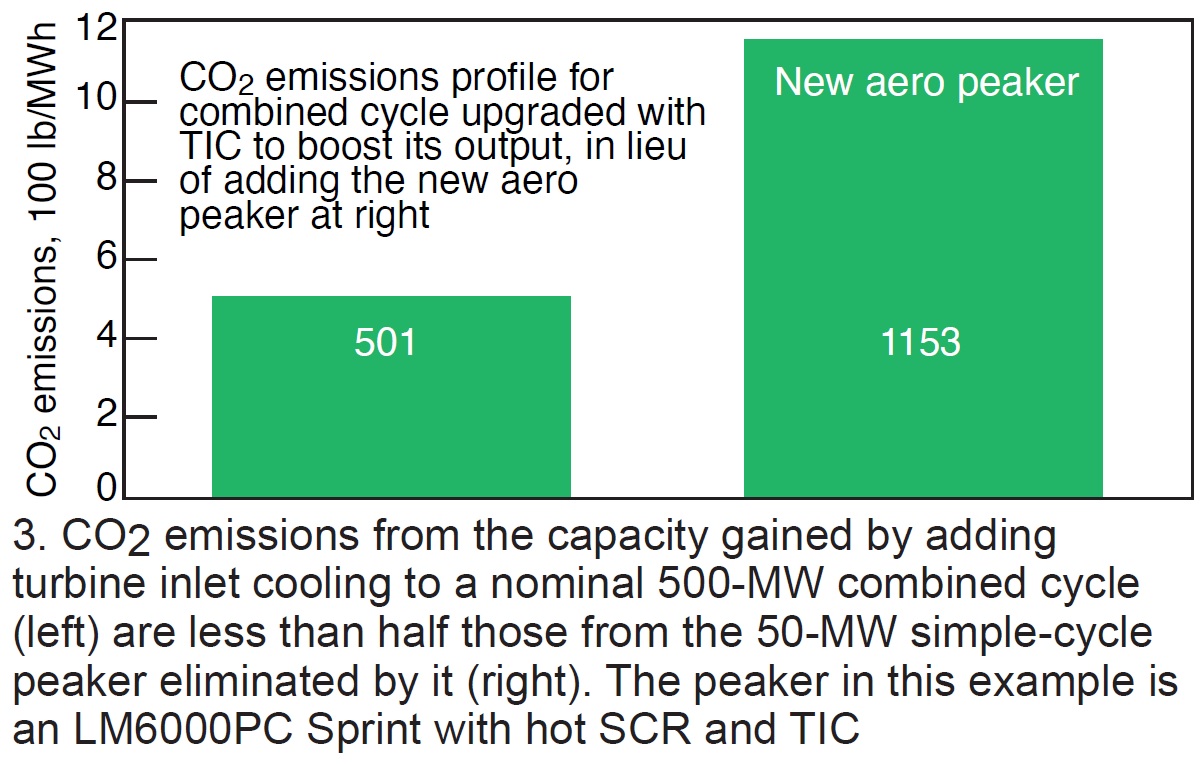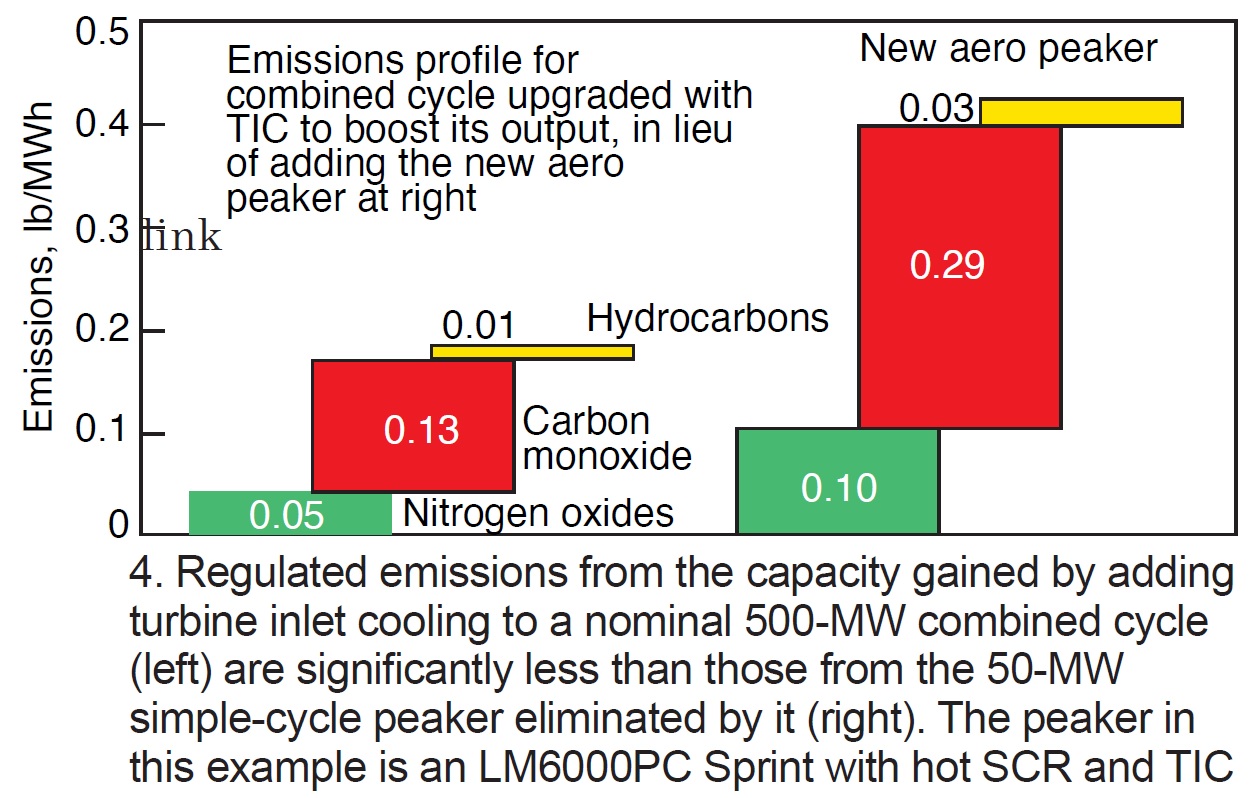Gas turbine systems produce over one-third of US electric energy requirements. They provide reliable baseload power, in addition to that required to support the intermittent production of electricity from renewable sources. According to a recent Washington Post article, “Turns Out Wind and Solar have a Secret Friend: Natural Gas,” every 0.88% of capacity from renewables needs 1% capacity back-up from a fast-reacting fossil-fuel system.

Thus, gas turbines, a cornerstone energy conversion technology for the efficient production of electricity and heat today, are destined to play an important role in the emerging global quest for zero carbon emissions, says Dharam Punwani, executive director, Turbine Inlet Cooling Assn (TICA).
He reminds that increases in ambient temperature and humidity adversely affect the output and energy efficiency of all gas turbines (Figs 1 and 2). Since high ambient temperatures reduce gas-turbine performance, the logical solution for preventing this adverse effect is to cool the inlet air before it enters the compressor. Several technologies have been used successfully for this purpose.

The Turbine Inlet Cooling Assn’s (TICA) website at https://turbineinletcooling.org is an excellent source of information on these solutions, especially recorded webinars bulleted here:
- Adiabatic wetted media evaporative cooling
- Fogging for evaporative cooling
- Wet compression
- Indirect heat exchange with chilled water
- Thermal energy storage for chilled water indirect heat exchange
- Hybrid cooling
The website also includes an inlet-cooling performance calculator, database of installations, and library of publications and presentations on all technologies.
Bear in mind that each technology has its pros and cons. No one technology is best suited for all applications. Selection of the optimum technology for your plant depends on many factors—including gas-turbine design, weather data for the plant location, value of additional electrical energy produced, and the value of unitized fuel saving.
The following summarizes the benefits attributed to cooling of gas-turbine inlet air:
- Increased power output.
- Increased energy efficiency.
- Reduced emissions per unit of electric energy produced (higher efficiency).
- Reduced grid-wide emissions (reduced need to operate less-efficient systems for meeting grid demand).
- Increased thermal energy in exhaust gases, which benefits combined-cycle and cogeneration systems.
- Lower capital cost compared to the addition of a peaking unit to increase capacity.
Because combined cycles are the most efficient fuel-fired option for producing electricity, upgrading with inlet cooling eliminates the need to operate a less-desirable alternative—such as running a simple-cycle peaking turbine with a rated capacity equal to the combined-cycle output gained by adding inlet cooling.

Examples of the quantitative benefits of using TIC on a 500-MW combined-cycle system for reducing emissions of carbon dioxide and regulated pollutants, are compared in Figs 3 and 4 to the emissions from a simple-cycle peaking turbine whose need was eliminated.

Similarly, installing inlet cooling on simple-cycle turbines eliminates the need to operate less-efficient systems.
According to an estimate by TICA, the use of inlet cooling on all combined-cycle systems in the top 20 states can reduce carbon emissions by more than 22 million tons annually.





